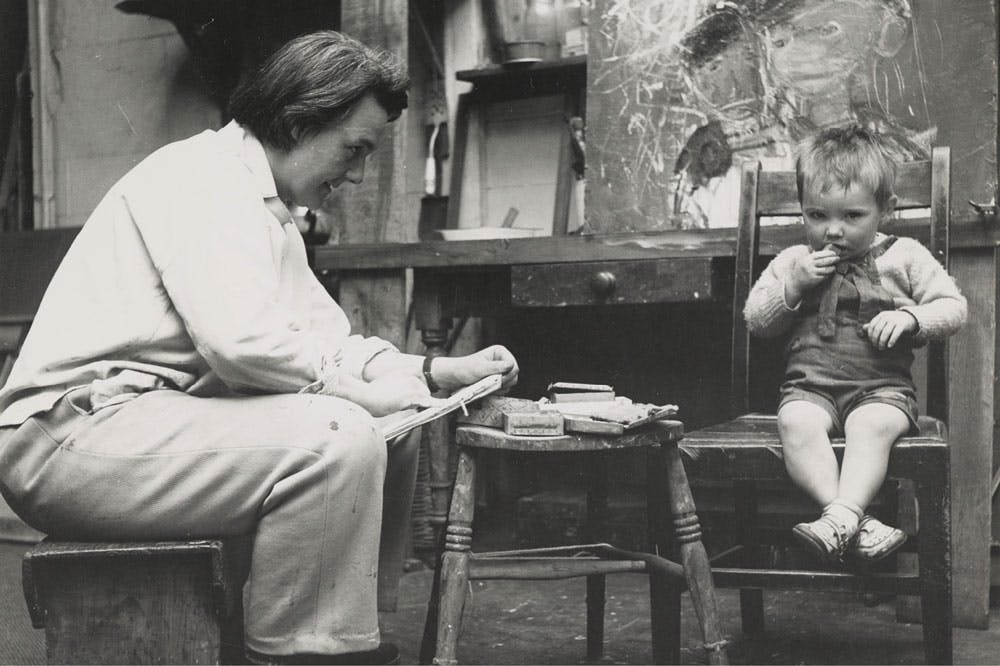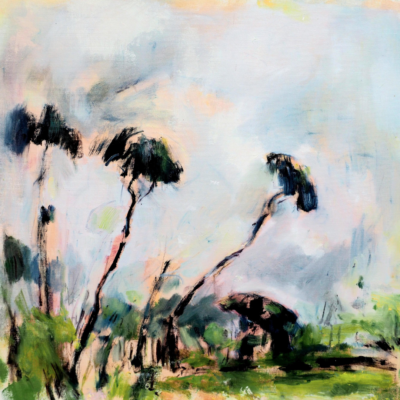Joan Eardley: The Forgotten Artist
Children from Glasgow’s slums, bleak seascapes, village fishermen at work … the vibrant visions of Joan Eardley are finding a new following.
Written by Frances Spalding for The Guardian
Joan Eardley, who died aged only 42 in 1963, is barely known in England. In 2007 the National Galleries of Scotland mounted a full retrospective, which attracted a new Scottish audience to her art. Currently, the Scottish National Gallery of Modern Art offers a more focused exhibition, concentrating on her passion for two places: Townhead, a poor part of Glasgow; and Catterline, a small fishing village a hundred miles north of Glasgow, on the Kincardineshire coast. Yet there are no known plans for this show to travel to any other part of Britain, even though Eardley, acclaimed as an artist of world-class importance, had an English father and was born in Sussex.
She moved to Scotland almost by happenstance. In 1929, when she was just seven, her father, who had been gassed during the first world war and had experienced failure as a dairy farmer, killed himself. Her mother decided to take Joan and her younger sister back to her family home at Blackheath, London, to live with their grandmother and aunt. But late in 1939, mother, grandmother and the two girls moved to Bearsden, a well-to-do suburb north-west of Glasgow, thereby escaping a London threatened with German bombing raids. Having spent a brief period at Goldsmiths College of Art, Joan began her studies at Glasgow School of Art in January 1940. This same year, while almost crippled with shyness, she began frequenting the studio of the Polish artist Josef Herman, then living in Glasgow, whose cursory style of drawing may have freed up her own. She also began exploring the east of the city, sensing that its vitality lay in this direction.
Read the full article on The Guardian.

18/3/2021
Share on
Related Stories

The Sunday Times: The Art of Learning
As seen in… Is it a bird, is it a plane? Our budding Rothko, Sean Newsom, signs up for an abstract art class in St Ives. Can I remind you that this jumble of fisherman cottages and harbour walls was also – for a time – the forcing house of British abstract art? – When...

Edged by the Sea - An Exhibition
During the past six months, Cornish artist tutor Victoria Gillow has been working – exploring and painting around our coast – soaking up the longer days and brighter weather. And her exploration has now come to fruition, as she launches a brand new solo art exhibition at Trebah Gardens in Falmouth. Running from 1 April...

The Health Benefits of Life Drawing
Life drawing has slipped in and out of vogue in recent decades, but as public attention shifts to the importance of mental health and wellbeing, it is enjoying something of a resurgence. A recent study by the BBC and Newcastle University compared memory and cognition in a group of 30 adults: they asked 10 to walk briskly, 10 to do puzzles such as crosswords and sudoku and 10 to attend life drawing classes. The experiment took place over 8 weeks, with a series of tests carried out across the volunteers at the beginning of the study and at the end. The life drawers, it turned out, showed significant improvement in memory and cognitive function following the experiment.
